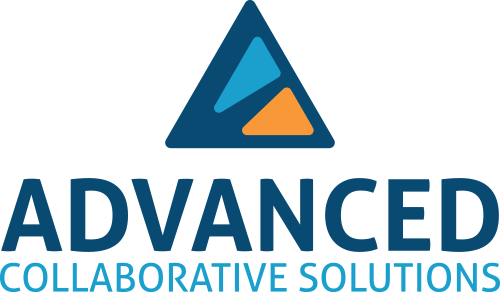The Role of Feedback in School Leader Development and School Improvement

By: Steve Ventura
School principals are the backbone of educational institutions, and they play a crucial role in ensuring the success of both their students and staff. To achieve this success, principals must continuously evaluate their own leadership practices and seek feedback from their stakeholders, including teachers, staff, students, and parents. Building a strong culture of evidence starts with the principal and the best way to be certain in your leadership is to relentlessly pursue the input and feedback of your stakeholders to drive your development.
5 Reasons Why Principals Must Seek Continuous Feedback
It is an ultimate practice in courage and humility to seek feedback on your performance as a school leader. While receiving feedback can be difficult, it plays an essential role in principal development and growth and has the power to improve school outcomes. Before digging into different types of helpful data points and best practices in soliciting and acting on feedback, let’s name a few of the critical reasons principals must seek feedback as part of their regular practice.
- Feedback shines a light on blind spots to build greater self-awareness. While more experience is often synonymous with greater instructional knowledge or more confident coaching, studies confirm a relationship between increasing experience with decreasing self-awareness. While around 95% of people believe they are self-aware, only 10-15% truly are. To avoid blind spots and be fully aware of both your performance and others’ perceptions of you, you must seek feedback and seek it frequently. Curious about your own level of self-awareness? Complete this 14-question quiz.
- You set an example for teachers and staff of what it looks like to be a continuous learner. Excellent principals are evaluators who constantly monitor the performance of their school and adjust accordingly. Model the ways you want your teachers and staff to seek, accept, and implement feedback. If you want to be able to walk into classrooms, provide real-time feedback, have critical conversations with colleagues, and so on, you must be open to feedback as a model of what you want to see from others. For feedback to be effective, leaders must get out in front and live the culture they want others to follow.
- Relatedly, a feedback-seeking principal cultivates a culture of improvement and growth. To develop a culture of continuous learning and growth, which is strongly correlated with positive school improvement and performance, the first person to set that tone is the school principal. Studies show that a reflective education builds a reflective culture that facilitates school improvement.
- Regular feedback provides you with an accurate pulse of school vision and culture. Soliciting feedback is a strong way to keep an ear to the ground. Feedback can tell you a lot about what’s most important to people, what resonates with them, and what they’re missing. Ideally, your organizational goals and priorities are clear and staff are invested in them and your leadership moves align to them.
- Giving and receiving feedback builds trust and strengthens relationships. Trusting relationships are an essential ingredient in the recipe for school success. Famous education researchers and practitioners, Anthony Bryk and Barbara Schneider, found time and again that while trust alone does not guarantee success, schools with little or no trust have almost no chance of improving. Build trust through the candid conversations, reflective listening, and bias toward action that a culture of feedback requires.
Feedback Formats: Surveys, Check-Ins, Evals, and More
There are numerous ways principals can effectively gather feedback, and each feedback format plays a different role in leadership or school improvement. Across all feedback channels, it is essential that you hear from all different stakeholder groups – teachers, staff, parents and families, and especially students. For a school to be healthy, equitable, and effective, every stakeholder group must be valued and heard, and one surefire way to ensure this is to implement feedback collection practices that honor every voice. Read on for different feedback formats, ways you can collect that feedback, and the role it can play in your pursuit of leadership and school improvement.
- Check-ins and 1:1 meetings: To stay tapped into your team and school’s culture, implement a system that allows you to meet one-on-one with each teacher at least quarterly. These meetings will serve multiple purposes – they build trust and relationships, help you keep a pulse on staff well-being and culture, provide an avenue for two-way feedback, and help you identify trends in areas of strength and development. A primary focus in these check-ins is to gather feedback on your performance, leadership, and goals. Some questions you could ask:
- What is one thing I’ve done well in instructional leadership? What is one thing I can do to improve my instructional leadership?
- What is one thing I’ve done that supported you this past week or month? What is one thing I can do to better support you and lead the school?
- In what areas should I grow to best meet our staff and students’ needs?
- What is the biggest obstacle for our school right now? How am I helping or hindering?
- Do you have the opportunity to do what you do best every day? If not, what could change?
- How can I help you unleash your talents and potential?
- 360 evaluations: These evaluations gather feedback from peers, direct reports, managers, and other staff about your performance. Questions are generally open-ended and there is no name attached to answers in order to encourage candor and meaningful responses. Often, leaders will collect 360 feedback more than once a year and keep questions as consistent as possible in order to have a point of comparison. Another helpful characteristic of these data points is you can spot trends in how different stakeholder groups perceive your performance. For example, peers may indicate more trust in their responses, whereas direct reports feel less trust. Check out this resource from Indeed for guidance in crafting 360 evaluation questions that align to your school’s goals, priorities, and values.
- Regular feedback surveys: Get into the habit of using surveys to gather feedback after events, professional development, and as intermittent pulse checks with different stakeholder groups. Beware of over-surveying, though. Ensure the questions you ask collect absolutely essential information that you and others can act on. SurveyMonkey and Google Forms are your friends, but good old-fashioned paper works, too.
- Surveying staff: Q12 surveys include 12 research-backed questions and are an excellent way to measure employee engagement, drive staff culture initiatives, and improve productivity.
- Surveying teachers: After a professional development session, PLC, or school event, particularly those you plan and lead, collect participants’ feedback about the timeliness, relevance, and impact of the session. Check out this resource for ways to format these surveys and different data points they can provide.
- Surveying families and students: Ultimately, your school’s purpose is to meet the needs of students. Gather feedback from students and their families at least twice a year with similar questions so you can identify improvements and areas of growth.
- Leadership observations: Advocate for your development and actively seek feedback from your manager or supervisor. Check out this sample administrator evaluation rubric, and see what metrics might be helpful in your development plan. You can also audit your own time through self-reflection, then debrief with your manager to set goals.
How to Effectively Gather and Act on Feedback
It’s one thing to administer a survey or ask a few questions. But what do you do next? And how do you ensure that the feedback you collect is pointing you in the right direction? As my mentor Douglas Reeves shares, the most effective feedback is accurate, fair, timely, and understandable (learn more in his video here). Here are a few tips that principals can use to solicit, collect, and act on stakeholder feedback effectively.
- Vary feedback structures and formats. Round out your feedback collection strategy with a variety of feedback structures – check-ins, 360 evals, quick-hit surveys, focus groups, and consultancy protocols. Provide an anonymous avenue so folks can be as forthcoming as possible. Craft a variety of questions that allow for open ended, more descriptive responses as well as data points that can quickly illustrate trends.
- Be transparent about the feedback process. It is important to communicate to stakeholders how their feedback will be used and the steps that will be taken to address any concerns or issues that are raised. Being transparent about the feedback process can help build trust and confidence among your school community.
- Consider the source. The high-priority feedback will come from your highest performing, cooperative, and collaborative teachers and staff. Ask these valuable folks about what they’re hearing, if your messages are getting out, and how those messages are resonating with the greater team. Some say that the “squeaky wheel gets the oil,” but do not fall victim to this mentality. Do not reward bad behavior by giving equal weight to feedback from those teachers who are most resistant. Your most resistant people are not your most important people.
- Say thank you. No need for a rebuttal or discussion. Give yourself the time and space to reflect on feedback. Pan for nuggets of truth, especially when the feedback feels difficult. Circle back if needed. It takes courage for a teacher, staff member, parent, or student to come to the school leader with feedback – view this is a testament to the culture of trust you have created in your organization. Check in with yourself when feelings of defensiveness arise. Stay curious, not furious.
- Identify trends and disregard extreme outliers. Once feedback has been collected, it is important to analyze it and prioritize action items. This can be done by identifying common themes or concerns that have been raised and developing a plan of action to address these concerns. Prioritizing action items can help ensure that the most pressing concerns are addressed first. The best way to get people to feel comfortable giving you feedback is for them to see that you actually act on the feedback.
- Share out your reflections. This step demonstrates continuous learning, reiterates your leadership moves that align to organizational or personal development goals, and increases accountability so you can grow as a leader. Communicate the results and action plan to stakeholders. This can be done through a school-wide meeting or through individual conversations with stakeholders. Communicating the results and action plan can help build trust and confidence among stakeholders and create a shared sense of ownership over the school's improvement process.
Advanced Collaborative Solutions to Support Your Leadership Development
Collecting feedback from stakeholders is crucial for school principals to continuously improve their leadership practices and create a positive school culture. By being transparent about the feedback process, being thoughtful in varying feedback formats, soliciting feedback from a variety of stakeholders, analyzing feedback and prioritizing action items, and communicating the results and action plan to stakeholders, principals can create a culture of continuous improvement and ultimately enhance the success of their school. My forthcoming book will act as an atlas for school leaders as they cultivate a culture of trust, collaboration, and growth. In the meantime, reach out and let’s prioritize your leadership development together.

